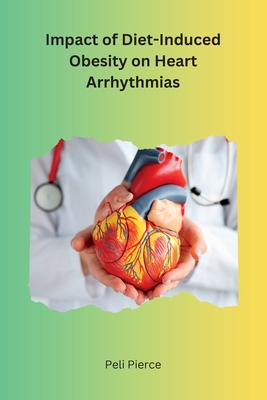You are here
Back to topImpact of Diet-Induced Obesity on Heart Arrhythmias (Large Print / Paperback)
Description
Obesity is a prevalent condition characterized by a body mass index (BMI) equal to or exceeding 30 kg/m2 (Apovian and Gokce, 2012). It is a significant contributor to morbidity and mortality (Jebb, 2004), arising from an imbalance between calorie intake and expenditure, leading to the accumulation of fat over time (Cheung and Mao, 2012; Heber, 2010; Walley et al., 2009). The development of obesity is believed to be influenced by a combination of factors, including genetic predisposition, environmental interactions, and human behavior (Cheung and Mao, 2012).
Various theories have been proposed regarding the genetic predisposition to obesity, such as the sedentary lifestyle hypothesis, predation release hypothesis, thrifty gene hypothesis, and the fetal programming hypothesis (Cheung and Mao, 2012). These theories, described in more detail in 2009, suggest a genetic component to obesity, as indicated by heritability studies in twins (Stunkard et al., 1986; Wardle et al., 2008). However, specific genes contributing to obesity remain unidentified. Moreover, as underdeveloped countries undergo modernization, obesity rates rise. This, coupled with the significant levels of obesity seen in developed nations, suggests a strong environmental influence on obesity development (Woods et al., 2003).
Obesity has reached epidemic proportions and represents a significant global health concern (Poirier et al., 2006; Walley et al., 2009). In 2016, it was reported that 1.9 billion adults aged 18 and above and 41 million children under the age of 5 were classified as overweight or obese worldwide (WHO, 2018). The prevalence of overweight and obesity is steadily increasing, particularly in low- and middle-income countries. For instance, Africa has witnessed a 50% rise in the number of overweight children since 2000 (WHO, 2018). Overweight and obesity now contribute to more deaths globally than underweight conditions (WHO, 2018).
In England, obesity rates have surged over the past 25 years. From 1993 to 2016, the proportion of adults considered obese increased from 15% to 26-27%, as depicted in Figure 1. Obesity rates are similar between males and females, with approximately 26% of males and 27% of females classified as obese in 2016. Obesity affects not only adults but also children, with 10% of 5-year-olds and 20% of 11-year-olds being classified as obese (NHS, 2018).
